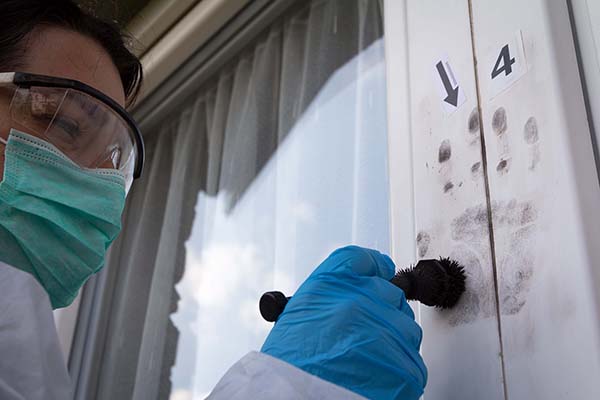Fingerprint identification is a widely used forensic method for linking an individual to a crime scene. Investigators at a crime scene can find invisible (latent) fingerprints, which consist of natural skin oils, by "dusting" surfaces with carbon powders. Although the presence of fingerprints might implicate a suspect as having been present at a crime scene, the time at which those fingerprints were left could be an important additional piece of evidence for incriminating or exonerating a suspect. According to a report in the journal Analytical Chemistry (January 2020), researchers have demonstrated a technique for determining the age of fingerprints based on the degradation of triacylglycerols (triglycerides)—simple fats or oils consisting of three fatty acyl chains esterified to a glycerol backbone. See also: Fat and oil; Fingerprint identification; Forensic science; Triglyceride (triacylglycerol)

Triglycerides in skin oils contain one or more double, or unsaturated, bonds. In the 2020 study, researchers used an analytical chemistry technique called matrix-assisted laser desorption/ionization mass spectrometry imaging (MALDI) to determine the chemical composition of latent fingerprints. Mass spectrometry is an analytical technique that measures the mass-to-charge ratio of ions produced by various means, including particle bombardment and laser desorption. In MALDI, photons from a laser strike and eject (desorb) molecules from a solid surface. During the desorption process, the molecules become ionized by either gaining or losing a proton. Once ionized, the chemical makeup of the molecules can be determined by measuring the ions’ mass-to-charge ratios. See also: Analytical chemistry; Desorption; Laser; Mass spectrometry

The MALDI results showed that unsaturated triglycerides in latent fingerprints were decreasing (degrading) over time. In reality, the researchers discovered that the unsaturated triglycerides were reacting with ozone in air and becoming more saturated. Tracking the rate at which the unsaturated triglycerides degraded enabled the researchers to determine a fingerprint’s age in days. The use of carbon fingerprint powder did not affect results. Although the concept of fingerprint age determination by MALDI has now been proven, researchers have received additional funding from the U.S. National Institute of Justice—the research, development and evaluation agency of the U.S. Department of Justice—which will allow further refinement of this technique. See also: Molecular weight





